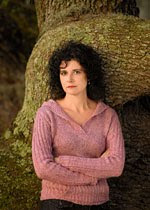At some point during the second half, she posted a Facebook status that said merely, "Rhett Butler!" Styles and tastes change, but the virile appeal of Clark Gable and Rhett Butler will never fade.
As we watched, she periodically bleated, "She's so awful!" as Scarlett plunged through a dying civilization, trailing her swaying hoopskirts and the disapproval of every unreconstructed rebel in Atlanta. Scarlett did some absolutely awful things, but she shouldered the responsbility of caring for her destitute friends and relatives and former slaves who didn't have her brass and determination. And she found room in that flinty heart to completely love her father and her mother and her daughter and Ashley and her Mammy and, though it took her way too long to figure it out, to love Melanie and Rhett, too. This, my cherished readers, is what one calls a memorable character. And so is her husband Rhett, the rogue who is burdened with just a little too much romanticism to be a convincing scalawag.
I've seen the movie and read the book many times, though not lately, so this was the first time I'd paid attention to the story from the perspective of a novelist. The first half of the movie is the epic war tragedy that we all remember, but not so the second half...the two hours that pass after Scarlett vows that she'll never be hungry again. I invite you to watch it, and pay close attention to the second half. The world is changing to something unrecognizable outside the walls of Scarlett's and Rhett's mansion, but it is their domestic tragedy that rivets our attention. The second half of Gone with the Wind
Watch Scarlett's face when she welcomes Rhett home from a long trip, only to be rebuffed by a man who thinks she doesn't want to see him. Watch her strike back at him with hateful words, instead of running into his arms. And listen to Mammy tell Melanie about the brutal and wounding things they say to each other in their grief over their daughter Bonnie's death.
Then read the book, so you can enjoy the character details that couldn't be crammed into the four-hour movie. Did you know that Margaret Mitchell said plainly that Scarlett O'Hara was not beautiful, but that she had the ability to make people believe she was? If you wanted to write about a character who was that strong and that dominating, how would you go about it?
It never hurts a writer to go back re-read something wonderful and familiar, if only to see how its author accomplished such a feat. Now I must resume my campaign to bully my daughter into reading Anne of Green Gables















No comments:
Post a Comment